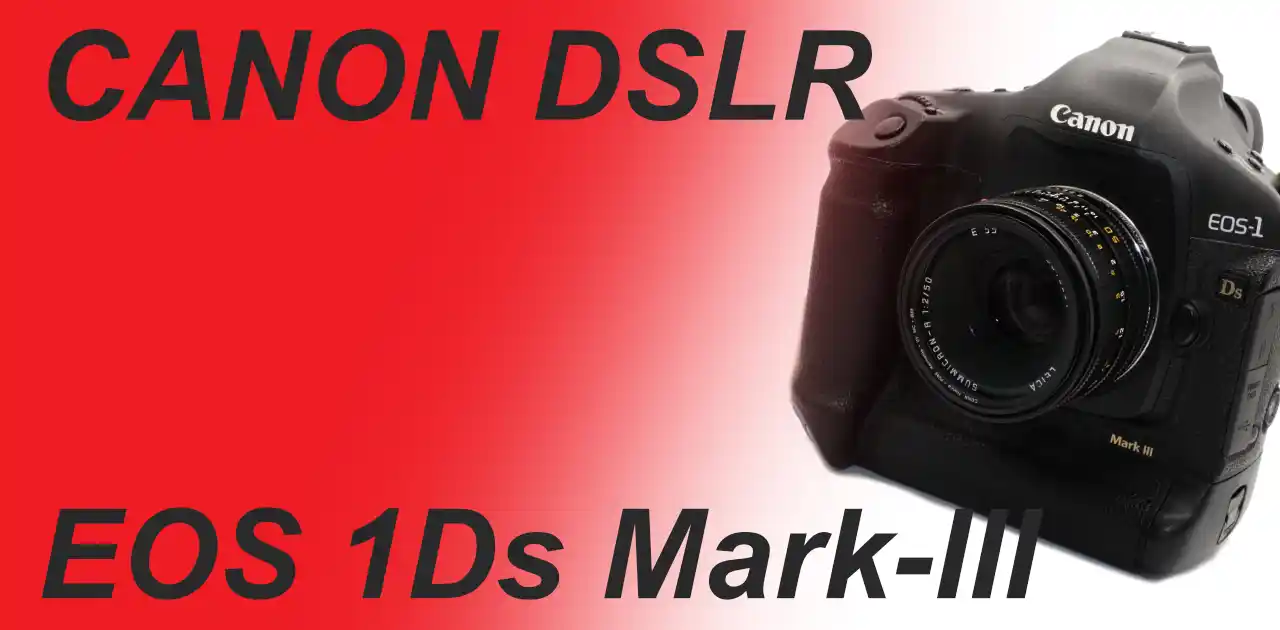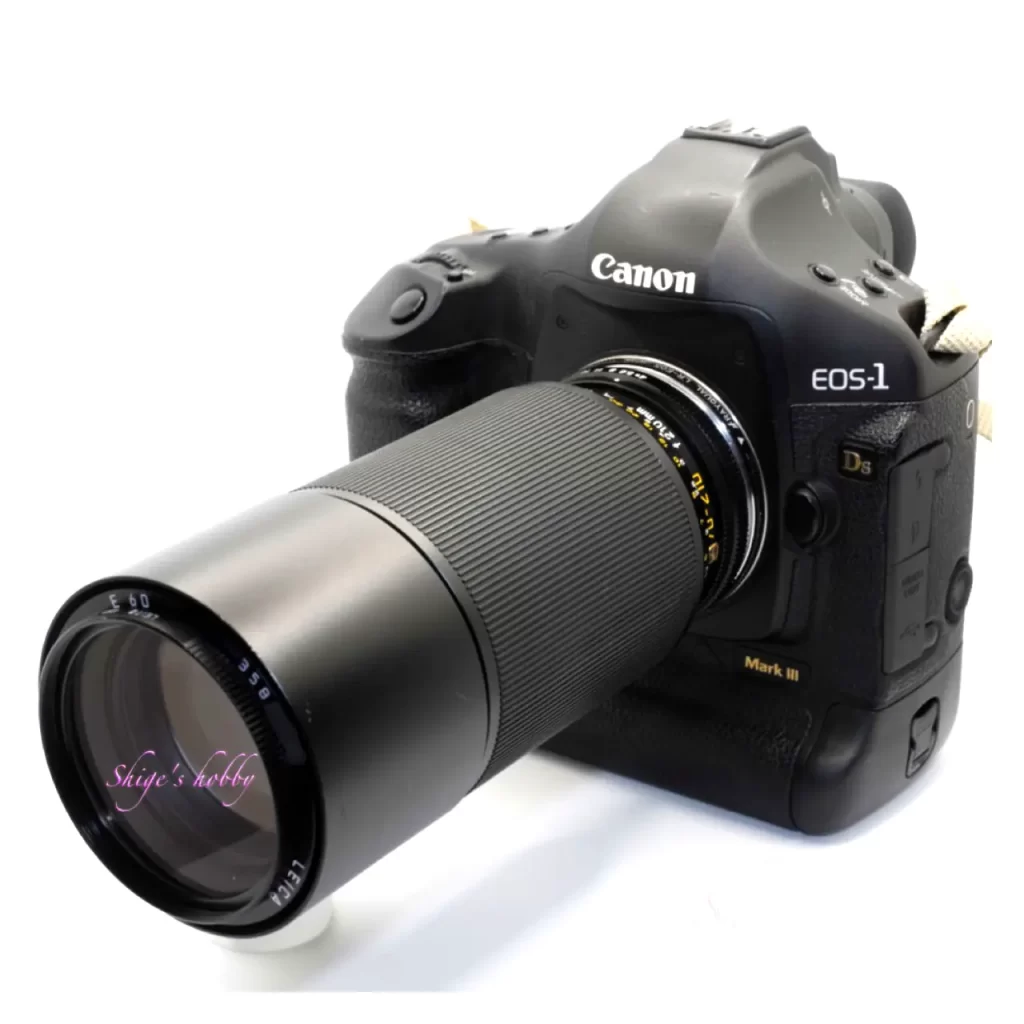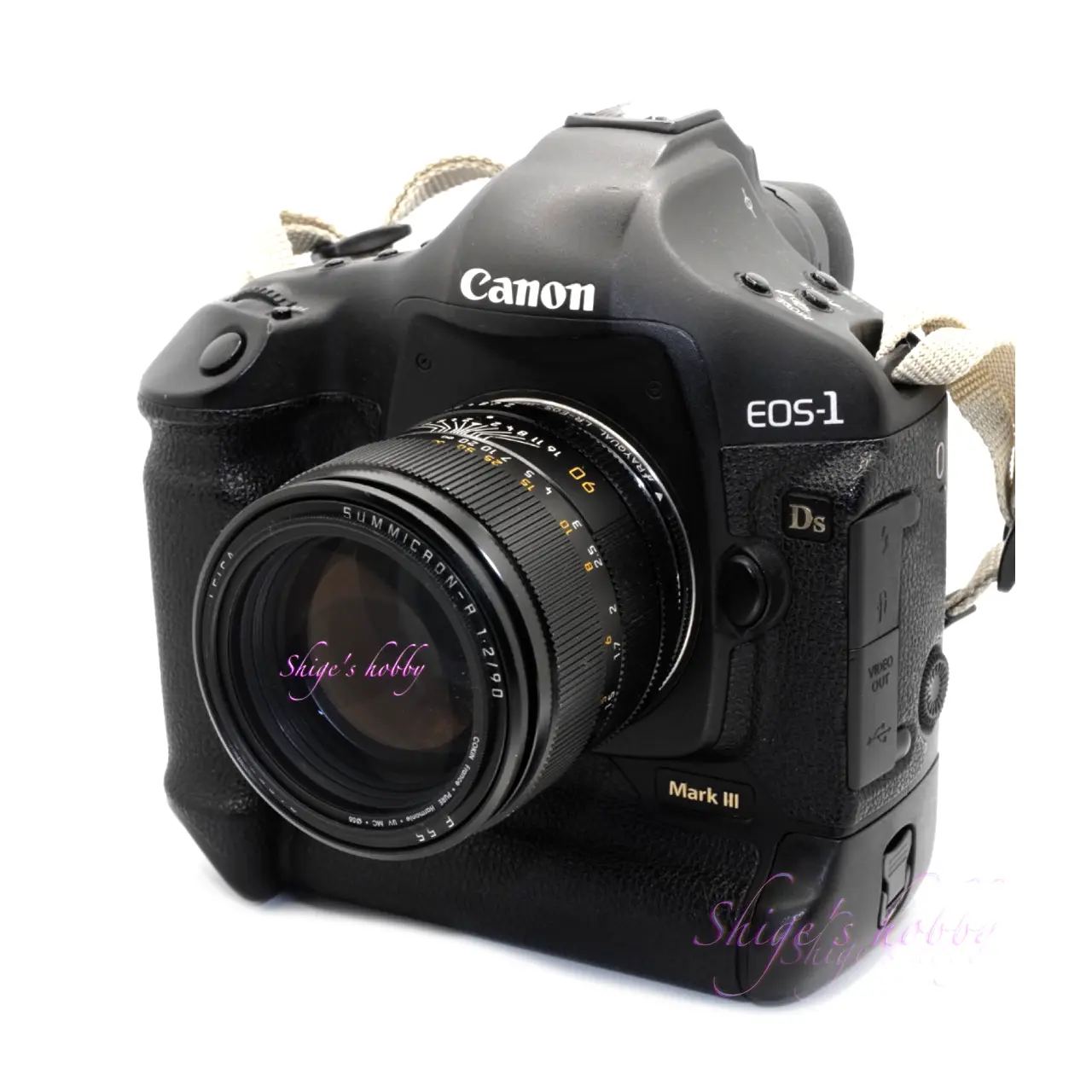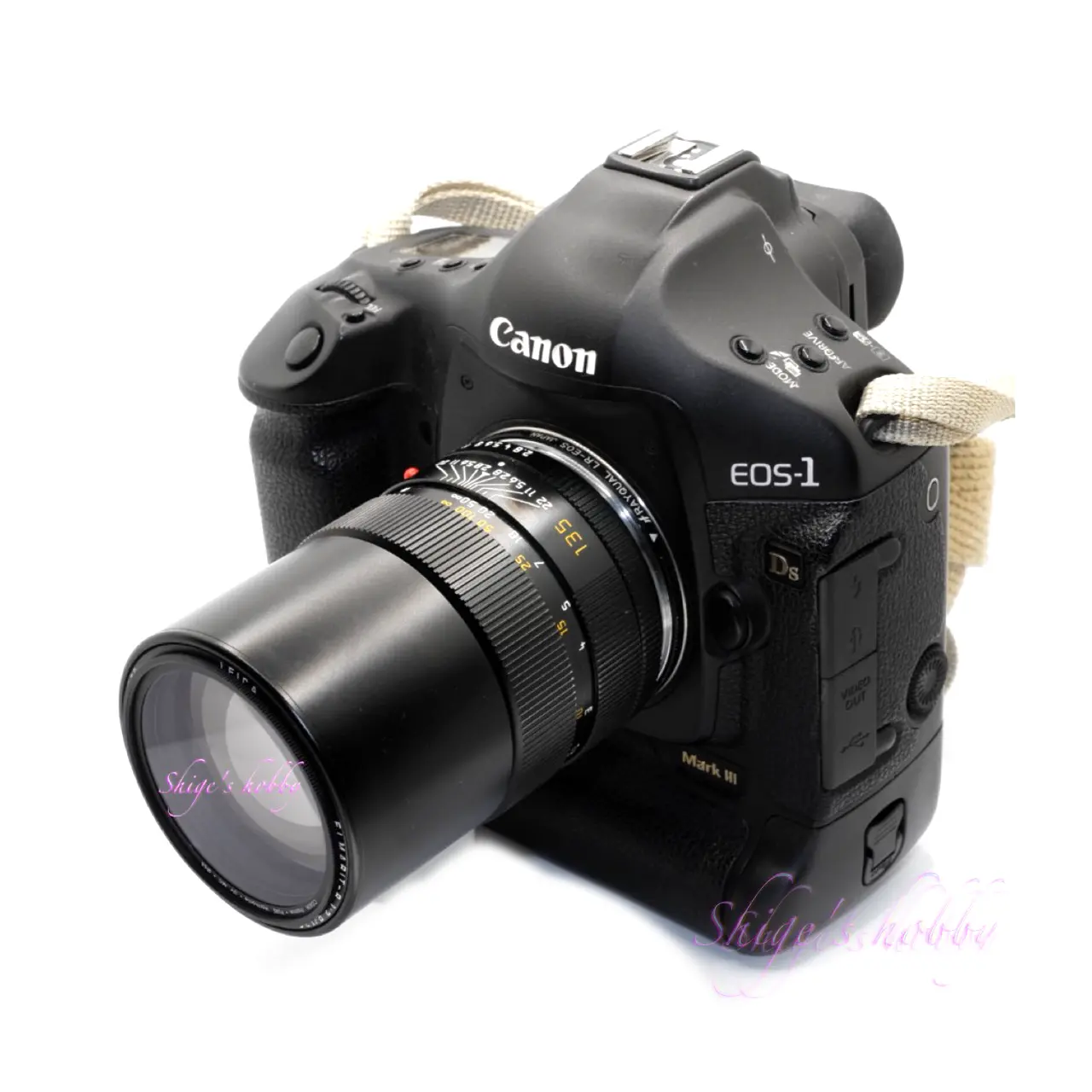35mmFF Y2007 flagship camera CANON EOS-1Ds Mark-III

A review and sample photos of the CANON EOS 1Ds Mark-III digital SLR camera with a CONTAX N VARIO SONNAR 24-85mm and a LEICA R-mount lens.
- Please see the disclaimer regarding advertising here.
- Italicized links in the text are advertisement links that take you to other sites.
Table of contents

Gallery
The following cameras were used to take the sample photos:。
- CONTAX N VARIO SONNAR 24-85mm F3.5-4.5
- LEICA ELMARIT-R 28mm F2.8 2nd
- LEICA SUMMICRON-R 50mm E55
- LEICA APO SUMMICRON R 90mm F2.8
- LEICA ELMRIT R 90mm F2.8
- LEICA VARIO ELMAR R 35-70mm F3.5
- LEICA VARIO ELMAR R 70-210mm F4
Review

1.Overview
The CANON EOS 1Ds Mark-III is a Canon digital SLR camera equipped with a 35mm full-frame sensor, released in 2007.
It was Canon’s high-end digital SLR camera with a 35mm full-frame sensor in 2007.
It has 21.1 megapixels and dual slots for CompactFlash and SDHC cards.
ISO sensitivity is 100-1600 for standard use, with an extended range of 50-3200.
It is powered by the dedicated LP-E4, LP-E4N, or LP-E19 batteries. However, to charge the LP-E4 and LP-E4N batteries, an LC-E4 or LC-E4N charger is required, and the LP-E19 battery requires an LC-E19 charger. While the LC-E19 charger appears to be compatible with the LP-E4 and LP-E4N batteries, Canon does not officially recommend it. Also, there is a warning that if you charge the LP-E4N battery with the older LC-E4 charger, it may not charge properly depending on the battery’s condition. The warning is quoted below. I couldn’t find it on the official website, so I quoted it from the Bic Camera product page.
- *[Caution when charging with the LC-E4]
When charging a worn-out LP-E4N with the LC-E4, all three charging lamps (malfunction indicator) may flash depending on the battery condition. If this occurs, check the battery condition using the charger or the camera itself. If the battery condition is still displayed, continue using the camera. Also, depending on the battery condition, it may not be possible to charge to 100%.
2.Usability
As mentioned at the end of the “Specifications and Considerations” section, my goal in purchasing the Canon EOS 1Ds Mark-III was to use Leica R-mount lenses. However, despite my initial goal of using Leica R-mount lenses, I didn’t do enough research and found that most lenses wider than 35mm were incompatible, preventing me from achieving my goal.
The only autofocus lens I own is the CONTAX VARIO SONNAR N 24-85mm, a CONTAX N-mount modified to EF-mount. I purchased this lens cheaply in the US because the aperture mechanism had broken on a lens modified from N-mount to EF-mount. When used with the 1Ds Mark-III’s 35mm full-frame sensor, this lens achieves a 24-85mm focal length, a modern standard zoom lens, as indicated on the lens label.
As for autofocus, I’ve only used it with the CONTAX VARIO SONNAR N 24-85mm, and it’s fast enough. Because it’s a questionable modified lens, the autofocus accuracy is sometimes inaccurate when looking at the results. In this regard, it’s possible that the lens itself is at fault.
As the image sensor is from 2007, the maximum standard sensitivity is ISO 1600 and the extended sensitivity is 3200, so don’t expect much high sensitivity. Personally, when viewing at 100% magnification, ISO 800 is about the limit, but if you zoom out, ISO 1600 seems like a reasonable option.
There is no ISO Auto option in the ISO sensitivity settings, but if you select “2: On (ISO Sensitivity)” for the “Safety Shift” function, in Program AE (P), Shutter-Priority AE (Tv), or Aperture-Priority AE (Av) shooting modes, if the correct autoexposure value cannot be obtained at the set ISO sensitivity due to changes in subject brightness, the ISO sensitivity will automatically change between 100 and 1600 to achieve the correct exposure.
As with all digital SLR cameras, the mirror and mechanical shutter that are the defining features of SLR cameras are quite noisy, even at 5 frames per second, due to the large mirror compatible with 35mm full-frame sensors. It is not suitable for use in quiet places where operating noise is a concern, especially indoors, because the sound of the camera’s mirror movement and shutter reflects indoors. Some people find this sound quite irritating.
It is therefore best suited to use in places with a certain amount of external noise, such as deserted areas.
When using LEICA R-mount lenses, manual focus is required, but the viewfinder of the full-frame EOS 1Ds Mark-III makes it difficult to achieve the focus peak with the standard matte finish when using a lens with a maximum aperture of f/1.4 at full aperture. Purchasing a matte finish improves this somewhat, but it also has drawbacks such as a darker viewfinder.
In the end, I compromised and used a smaller aperture or focus bracketing, which involves slightly changing the focus position.
As expected, when it comes to focusing, the electronic viewfinder on a mirrorless camera is more reliable and easier to achieve.
The EOS-1D, 1Ds, and 1DX series cameras have an integrated vertical grip that is almost square when viewed from the front. Because the lens is in the center, it’s difficult to store a mid-range camera in a shoulder bag with the lens attached. I’ve looked around for various camera bags in the past, but I haven’t found anything that really worked, so I end up forcing the camera into my bag, expanding the bag a little. A deeper backpack would probably be better for storing a camera with a lens attached, but I prefer shoulder bags, so I don’t use them.
3.Summary
In conclusion, to sum up the Canon EOS 1Ds Mark-III is a digital SLR camera that is still practical in terms of image quality in 2025. However, the SLR camera system itself is inferior to mirrorless cameras in many ways, so it is best to clearly determine your intended use before purchasing.
Recording memory cards are available as CompactFlash and SD cards, but please note that the SD card slot only supports SDHC cards up to 32GB. SDXC cards are not recognized.
Weaknesses of SLR Cameras and Advantages of Mirrorless Cameras
- Lack of flexibility in viewfinder display → Variety of information displayed by the EVF, brightness adjustment in dark places
- Mechanical shutter and mirror mechanism can be noisy → Silent shooting with an electronic shutter
- Camera systems, including lenses, tend to be large → The lack of a shutter mechanism allows for the camera and lens to be smaller
Specifications, considerations, etc.
Leica R mount lenses


The Canon EF mount is a convenient mount that allows you to attach a variety of third-party lenses via a mount adapter. However, because the rear element of some Leica R mount lenses is located close to the mirror, some lenses can cause the camera to malfunction and become unusable with EOS digital SLR cameras equipped with 35mm full-frame sensors.
The Canon EOS 1Ds Mark-III was unable to use almost any Leica R mount lenses with a focal length wider than 50mm. Of the R mount wide-angle lenses I had, the only one I could use was the ELMARIT R 28mm 2-inch.
Of course, there are almost no issues when using Leica R mount lenses with a mirrorless camera, but because the Leica R mount is an SLR camera mount, I tried the Canon EF mount with a 35mm full-frame sensor, the most versatile option for digital SLRs, but unfortunately, I was unable to use most of the Leica R mount wide-angle lenses I owned.
The linked table summarizes errors with this Leica R-mount lens and EOS digital camera, so if you refer to it, you will be able to see which lenses are compatible with each camera.
The ELMARIT R 28mm 1-inch, which is marked with a Y (compatible) in the list linked above, was not usable in my environment due to an error. The other lenses marked with a Y, such as the Super-Elmar-R 15mm F3.5, Elmarit-R 19mm F2.8, and Super-Angulon-R 21mm F4.0, were not in my possession when I owned the camera, so I cannot verify the authenticity of the list.
This could be due to differences in the response of the contact detection sensor between cameras, or errors in the lens’s specifications, which may result in some lenses being usable and others not, but ultimately you will have to check with your own camera and lens.
About the 1Ds series
The EOS 1Ds series has been released in three models: the original, Mark-II, and Mark-III, with the EOS-1DX being the successor to the 1Ds Mark-III. If you’re buying a used camera, keep in mind that the original and Mark-II use nickel-metal hydride batteries, which are heavy and make battery management a hassle, so we don’t recommend them. The 1Ds Mark-III and later, which use lithium-ion batteries, are easier to use. Also, 20 megapixels are standard from the 1Ds Mark-III onwards, and newer cameras offer improvements such as mirrorless-like camera mechanisms, high ISO support, and faster continuous shooting speeds. However, if you don’t require a lot of continuous shooting and use it for daytime photography at an ISO sensitivity of around 100-400, there isn’t much difference between the 1Ds Mark-III and later.
Because this is a camera sold to professionals, the used market is dominated by cameras with high shutter counts, and most are no longer in their repair period, so it’s best to purchase one with the intention of wearing it out.
At the time of release, it was a high-end camera, so if it works without any problems, it will give you a sense of excessive quality that sets it apart from mid-range cameras for hobby use.
Canon digital SLR camera shutter count
To check the shutter count on Canon cameras, you need to connect the camera to a PC via USB.
Special software is required to check this. For Windows, the free software “Canon EOS DIGITAL Info” is registered on Sourceforge and is available free of charge.
For Mac, only paid software is available, and both “ShutterCount” and “Free Shutter Count” require a paid subscription to check the shutter count. The latter, “Free Shutter Count,” has the word “free” in its name, but it can be confusing in that the free software only checks the last three digits of the shutter count.
Confirming the shutter count is easy, as Nikon cameras record the shutter count in the captured image, in contrast to Canon cameras. Both methods can yield inaccurate results, and malfunctions can occur even with a low shutter count. Therefore, it’s best to consider the shutter count as a guide to the camera’s health.
| Items | CANON EOS 1Ds Mark-III | EOS 1DX Mark-III |
| Camera effective pixel count | 2110 | 2010 |
| Image sensor type | CMOS | CMOS |
| Image sensor size | 35.9×23.9mm | 35.9×23.9mm |
| Lens mount | CANON-EF | CANON-EF |
| Rear LCD | 3.0-inch/approx. 230,000 dots | 3.2-inch (3:2) / approx. 2.1 million dots |
| Finder | Pentaprism, eye-level type, approximately 100% vertically and horizontally, approximately 0.76x magnification (50mm lens, infinity, -1m-1) | Pentaprism, eye-level type, approximately 100% vertically and horizontally, approximately 0.76x magnification (50mm lens, infinity, -1m-1) |
| Frame speed | 5 frames per second | Shutter: 16 frames/sec Live View: 20 frames/sec |
| Image processing name | デュアルDIGIC 4 | DIGIC X |
| Auto Forcus method | TTL secondary imaging phase difference detection method | Viewfinder: TTL secondary imaging phase-difference detection with dedicated AF sensor Live View: Dual Pixel CMOS AF |
| Battery | LP-E4N / LP-E4 / LP-19 | LP-19 / LP-E4N / LP-E4 |
| Recorded media | CompactFlash & SDHC | CFexpress memory card Type B compatible: 2 card slots |
| Size(mm) W x H x D | 156 × 159.6 × 79.9 | 158.0 × 167.6 × 82.6 |
| Weight(g) | 1320 | 1,440 |
| Release date | October 2009 | October 2020 |
Options
- Canon Battery Pack LP-E4
- Canon Battery Pack LP-E4N
- Canon Battery Pack LP-E19
- Canon Battery Charger LC-E4
- Canon Battery Charger LC-E4N
- Canon Battery Charger LC-E19
Reference links
- EOS-R3・There are notes about the LP-E19 and LC-E19 at the bottom
- CANON EOS 1Ds Mark-III・CANON Official page
- CANON EOS 1DX Mark-III・CANON Official page
- Canon EOS DIGITAL Info・Sourceforge download page
- CONTAX N VARIO SONNAR 24-85mm F2.8-3.5・Shige’s hobby
- LEICA R SUMMILUX 50mm F1.4 E55・Shige’s hobby
- LEICA R ELMARIT 28mm F2.8 2nd・Shige’s hobby
Affiliate links
- CONTAX VARIO SONNAR N 24-85mm・Ads by Yahoo Shopping

Update history
- 2025.10.1
Leave a Reply